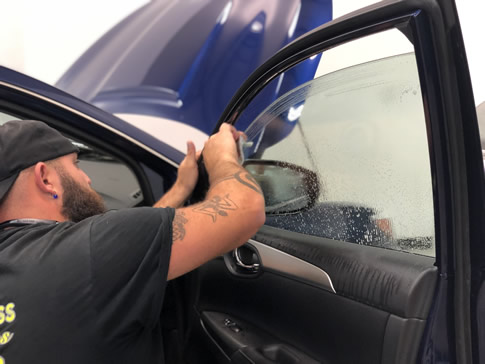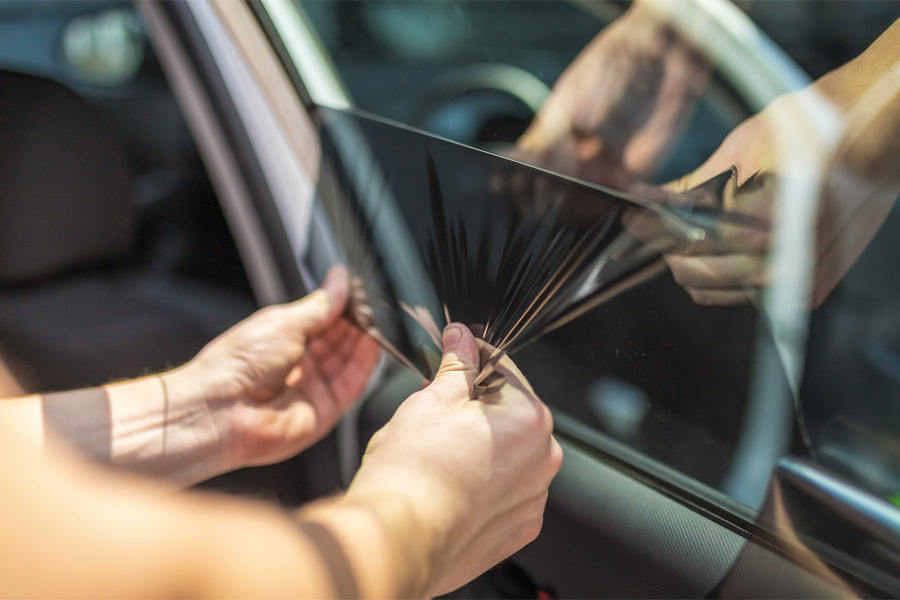Checking Out the Legal Facets of window tinting in Your State
Checking Out the Legal Facets of window tinting in Your State
Blog Article
Exploring the Various Types of Home Window Color for Cars and Their Advantages

Dyed Home Window Tint
Dyed window color is a prominent choice amongst automobile owners looking for to enhance personal privacy and minimize glow while keeping an elegant look. This type of tint is developed by incorporating color right into the glue layer, which is then put on the windows of the vehicle. The key allure of dyed home window color hinges on its capacity to provide an aesthetically pleasing appearance without compromising functionality.
Among one of the most considerable advantages of dyed home window color is its capability to block unsafe UV rays, helping to protect both guests and the vehicle's inside from sunlight damage. Additionally, this tint successfully reduces glow, contributing to a much more comfy driving experience, particularly throughout intense daylight problems. The strengthening of window shade also includes a layer of personal privacy, making it a lot more tough for outsiders to see inside the lorry.
However, it is important to keep in mind that while colored home window tint supplies numerous benefits, it might not supply as much heat rejection as other types of tints. Its durability can be affected by exposure to extended sunshine, potentially leading to fading over time. On the whole, dyed home window color remains a popular choice for those prioritizing visual appeals and basic sun defense.
Metalized Window Color
Metalized home window color represents an advanced alternative for cars and truck owners looking to improve both performance and aesthetic appeals. This kind of tint includes tiny metallic fragments that reflect sunlight, offering a series of advantages that attract numerous lorry proprietors. Among the primary benefits of metalized window tint is its remarkable heat denial capacities, which can dramatically lower the interior temperature of a cars and truck. This not only enhances comfort for guests however also lessens the tons on the automobile's a/c system, potentially boosting fuel performance.
Furthermore, metalized colors supply raised resilience compared to colored films, making them immune to fading and damaging. This long life guarantees that the color keeps its performance and look over time, supplying long-term worth.
In addition, metalized home window tint can boost privacy and security by making it extra difficult for outsiders to see inside the vehicle. The reflective high quality of the color can additionally deter possible burglary, as prized possessions are much less visible (window tinting). While it may conflict with some digital signals, such as general practitioner or cellular phone reception, the general benefits make metalized window tint an engaging selection for numerous car owners
Ceramic Window Tint
Providing advanced modern technology and unrivaled efficiency, ceramic home window color has become a top selection for critical auto owners. This innovative film is composed of advanced ceramic fragments that offer considerable warm denial while maintaining quality and exposure. Unlike conventional colors, ceramic window tint does not rely upon steel or color, which can hinder electronic signals from devices such as general practitioner and mobile phone.
One of the standout benefits of ceramic window tint is its extraordinary UV protection. It blocks as much as 99% of hazardous ultraviolet rays, thus protecting both the car's interior and its residents from sun damages. Furthermore, this sort of tint enhances privacy without compromising visibility, making it a sensible alternative here are the findings for day-to-day motorists and luxury lorries alike.
Ceramic window tint additionally boasts sturdiness; it is resistant to fading and scratching, making certain durable efficiency. Its non-reflective nature indicates it does not create glow, contributing to more secure motoring problems (window tinting). For those looking for a premium color solution that combines visual appeals with performance, ceramic home window color stands apart as a premium choice, providing improved convenience and security when traveling
Carbon Home Window Color
When it comes to window tinting alternatives, carbon home window tint has actually gotten review appeal for its blend of efficiency and affordability. This type of tint is made up of carbon particles, which supply a distinctive matte finish that enhances the visual allure of vehicles. Among the key benefits of carbon home window tint is its ability to block a considerable quantity of harmful UV rays, securing both the car's inside and its residents from skin damages and fading.
Furthermore, carbon window color offers outstanding warmth rejection properties, decreasing the requirement for excessive air conditioning and improving fuel performance. Unlike dyed colors, carbon colors do not discolor gradually, maintaining their performance and look for several years. This resilience makes them a functional choice for auto proprietors looking for lasting worth.
Moreover, carbon home window color is non-metalized, which implies it does not conflict with digital signals, making it ideal for lorries furnished with GPS, Bluetooth, and other cordless innovations. The balance of cost, performance, and visual allure has actually established carbon home window color as a favored option for several vehicle proprietors. Ultimately, it works as a trusted option for those looking to enhance convenience while guaranteeing style.
Factory Tint
Manufacturing facility tint, additionally called OEM color, refers to the tinting that is put on vehicle home windows throughout the production process. This sort of color hop over to here is commonly incorporated right into the glass itself, offering an uniform look and regular degrees of shading across all home windows. The primary function of factory color is to decrease glow and improve guest convenience while giving a degree of UV protection.

While manufacturing facility color offers fundamental benefits, it may not provide the same degree of heat being rejected or privacy as higher-grade aftermarket tints. For that reason, car owners seeking enhanced performance may think about extra tinting alternatives, while still appreciating the visual allure and functionality factory color offers.
Conclusion

Nonetheless, it is crucial to note that while dyed home window tint offers various advantages, it may not give as much warm rejection as various other types of colors. For those looking for a costs color service that integrates aesthetics with functionality, ceramic home window tint stands out as a superior selection, supplying boosted convenience and protection on the roadway.
When it comes to window tinting options, carbon home window tint has actually gained appeal for its blend of efficiency and cost.Factory color, likewise understood as OEM color, refers to the tinting that is used to car home windows during the production procedure. The exact degree of color can vary depending on the automobile producer and version, with some cars including a lot more considerable color on back windows than on front home windows.
Report this page